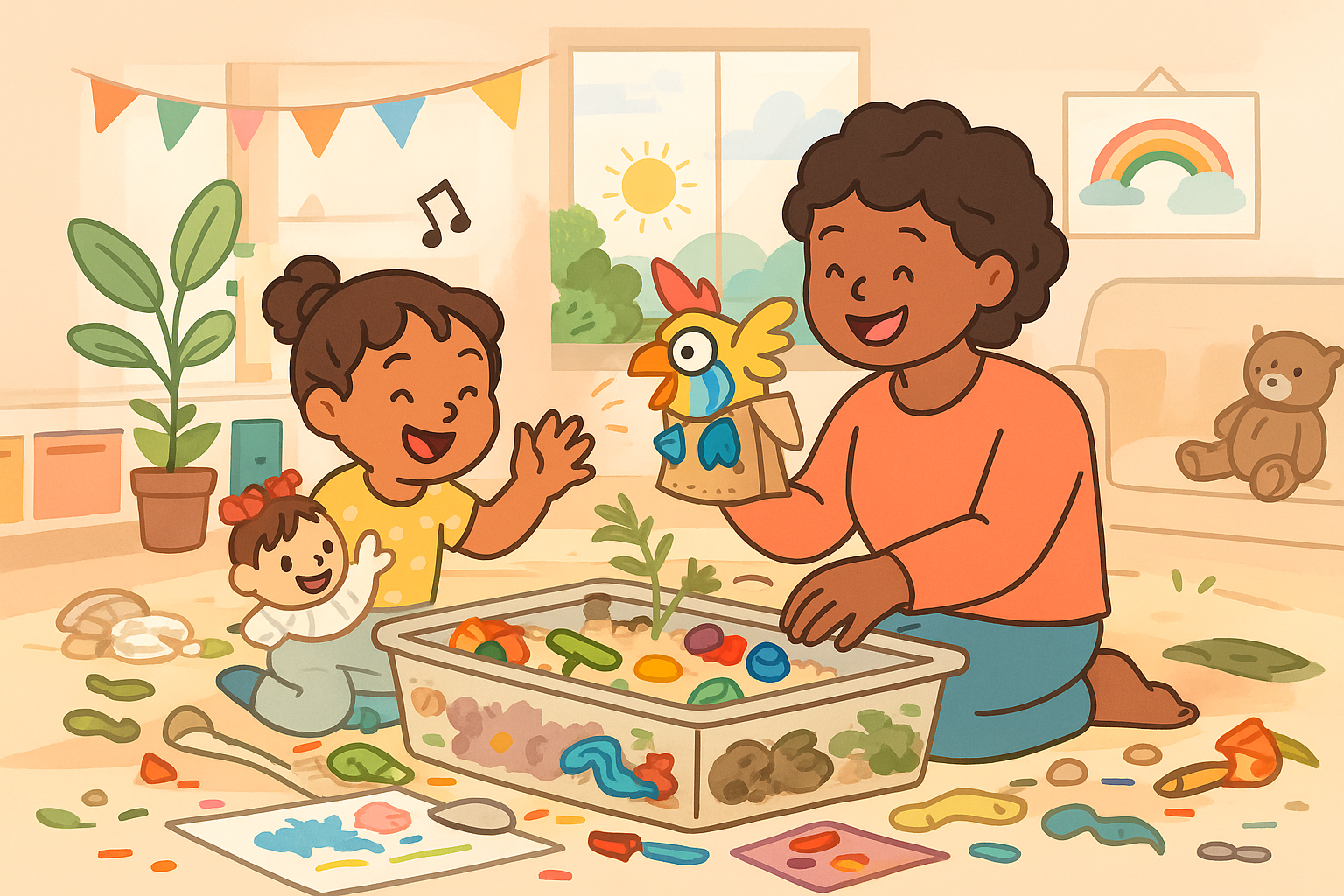The Magic of Puppet Play: How Storytelling Builds Imagination
The Magic of Puppet Play: How Storytelling Builds Imagination
When a puppet starts talking, kids listen — and believe. That’s the magic of puppet play: it transforms simple moments into storytelling, empathy, and laughter.
Whether made from a sock, a paper bag, or one of Fuzzigram’s digital puppet pals, puppets invite kids to explore emotions, practice language, and step into the shoes (or paws!) of others.
Let’s dive into how puppet play fuels imagination — and how to start your own playful storytelling moments at home.
Why Puppets Are So Powerful
Puppets act as a bridge between reality and imagination. They make it easier for kids to express thoughts or feelings that might otherwise be hard to say.
Through puppet play, children learn to:
Tell stories with structure and sequence.
Build empathy by imagining another point of view.
Practice communication and tone of voice.
Solve problems creatively within stories.
💡 Fuzzigram tip: Puppets make emotional conversations feel safe — “The bear is sad” is easier to say than “I’m sad.”
Step 1: Start Simple — Make or Find a Puppet
You don’t need a theater or fancy supplies. A puppet can be:
A sock with drawn-on eyes.
A paper bag with glued-on shapes.
A stuffed animal given a new “voice.”
A digital puppet character from the Fuzzigram app!
💡 Fuzzigram tip: Let your child decorate and name their puppet — naming gives ownership and helps them bond with it.
Step 2: Give Puppets Personalities
Kids love when each puppet has a unique voice and style.
Encourage your child to invent:
A silly puppet (high voice, big laugh).
A wise puppet (slow, calm tone).
A shy puppet (whispers or giggles).
💡 Fuzzigram tip: Don’t overthink it — exaggeration is what makes it fun.
Step 3: Tell Stories Together
Start with something familiar — a favorite story or daily routine — and retell it with puppets.
Example:
Morning routine → Puppet brushing teeth, getting dressed.
Playground scene → Puppet taking turns and solving conflicts.
💡 Fuzzigram tip: Act out real-life situations to help your child practice social and emotional skills.
See Independent Play: How to Foster Focus and Confidence in Kids.
Step 4: Encourage “Showtime” Moments
Set up a mini puppet theater with a cardboard box, table edge, or curtain.
Invite your child to perform for you, siblings, or their toys. Applaud every performance — confidence grows with every show.
💡 Fuzzigram tip: Keep shows short and silly. Kids love an audience, but they also love knowing when it’s their turn to direct you.
See Building a Playful Home: Spaces That Inspire Creativity.
Step 5: Use Puppets to Talk About Feelings
Puppets are a gentle way to explore emotions.
Try starting conversations like:
“How is the dragon feeling today?”
“What can the bunny do when he’s frustrated?”
💡 Fuzzigram tip: Puppets turn abstract emotions into something kids can see, hear, and relate to.
See Music and Movement Activities That Help Kids Learn Rhythm and Emotion.
Step 6: Blend Puppet Play With Art and Craft
Invite your child to create puppet accessories or backdrops:
Draw houses, trees, or castles on cardboard.
Paint or color new outfits.
Use recycled boxes to build puppet stages.
💡 Fuzzigram tip: Combining puppetry and art turns one activity into an afternoon of creativity.
Step 7: Turn Storytime Into Puppet Time
Use puppets to act out bedtime books. Let your child “cast” characters and choose who speaks.
💡 Fuzzigram tip: This helps kids listen closely, recall story order, and express themselves through performance.
Step 8: Go Digital — Creative Storytelling With Apps
Fuzzigram lets parents bring puppet characters to life through voice, animation, and sound — safely and creatively.
💡 Fuzzigram tip: Blend digital and physical play. For example:
Record a digital puppet video.
Then recreate the same scene live with a real puppet.
Step 9: Build Cooperative Puppet Stories
Have multiple puppets solve a problem together — like cleaning up a spill or helping a friend. This teaches teamwork and empathy through pretend play.
💡 Fuzzigram tip: You can even join the story with your own puppet and let your child “direct” you!
Step 10: End With Reflection
After a puppet session, ask questions that reinforce learning:
“What was your puppet’s favorite part?”
“How did your puppet solve that problem?”
💡 Fuzzigram tip: This turns play into self-reflection — a gentle way to build emotional intelligence.
Puppet play combines the best parts of childhood — imagination, storytelling, laughter, and connection. Through every silly voice and dramatic tale, kids learn empathy, creativity, and confidence in their ability to express themselves.
So grab a sock, a smile, and a silly idea — and watch what happens when your child brings their imagination to life, one puppet at a time.
This content is for educational purposes and is not a substitute for professional medical or psychological advice.
Popular Parenting Articles


